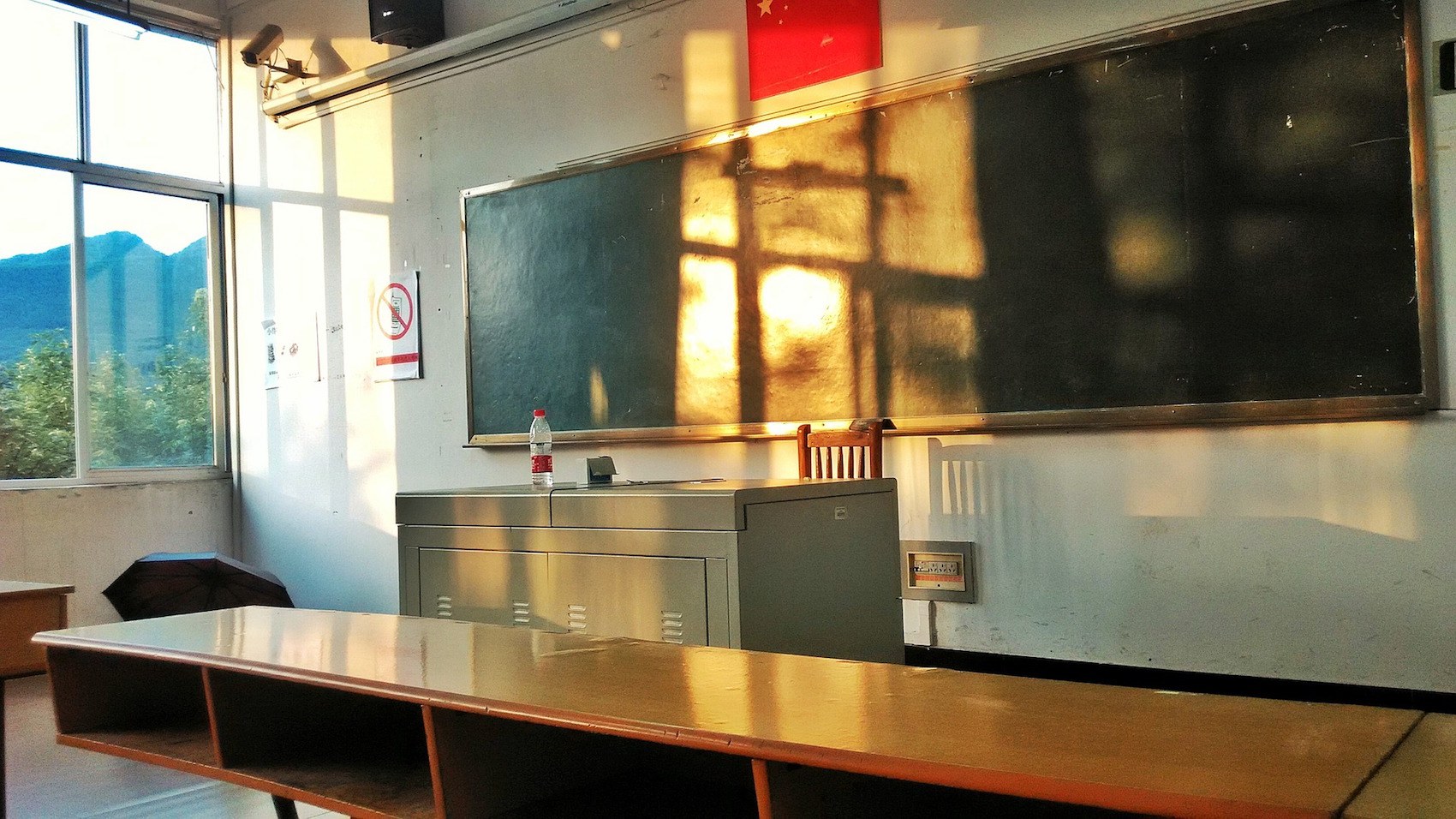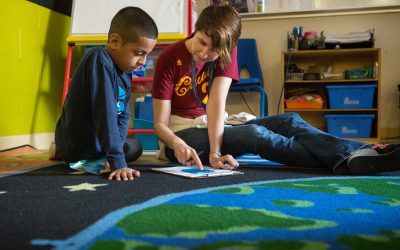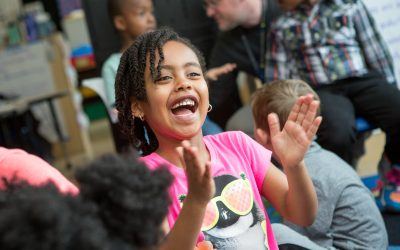Early Influencers
So, the title of this blog is not completely true. Still, the majority of this piece details why it may as well be true for me and why it should be for you, too. First though, in any discussion on what I know about teaching I’d be remiss not to acknowledge Baba Asa G. Hilliard III (Nana Baffour Amankwatia II) —Black, though not a woman. He was a giant of an educational psychologist. Dr. Hilliard was so relentlessly loving in his commitment to the liberation of Black children through education that I could almost see it coming from his pores and feel it in his presence. At his funeral service, one speaker insisted to the packed Martin Luther King, Jr. International Chapel at Morehouse College that we not just, “say what Asa said.” He challenged us to “Do what Asa did.” What an enormous challenge. While presenting at a conference early in my teaching career, Baba Asa walked into a workshop that I facilitated on teaching literacy to African American students through community oral history projects. At one point, he nodded approvingly my way. In that moment I was so encouraged. “Baba Asa approves. I’m on the right track,” I thought to myself. Immediately after that thought followed what felt like a ten-ton weight of pressure to grow continuously toward the standard he set. Eighteen years into my career, I’m still trying. There’s also Dr. Martha Trudeau Tucker, a woman though not Black. By design, my teacher preparation program mirrored a medical residency. Dr. Tucker was the equivalent of our attending. That had to be mentally exhausting; I had no unexpressed thoughts. Still, she always listened until I figured out what I was actually saying. It would be impossible to overstate her role in the formation of my teaching philosophy and pedagogy. Impossible.
Our Debt to Ten Black Women
That being said, it is Black women to whom I owe the greatest debt for any good work that I have done in this field. This is particularly true of potentially affirming, responsive, or transformative contributions I’ve made to the educational lives of Black children. My own daughter is included in this assertion. I am convinced that we are all indebted to many Black women in this way. On my journey there have been ten such women in particular.

Namely, it is the labor of Black women scholars Lisa Delpit (1995, 2016), Michele Foster (1997), bell hooks (1994), Jacqueline Jordan Irvine (2002), Geneva Gay (2000, 2010, 2018), Gloria Ladson-Billings (1994), Theresa Perry (2003), Vanessa Siddle-Walker (1996), Geneva Smitherman (1999), and Beverly Daniel-Tatum (1997, 2017) that enabled me to manage being a younger than twenty-year old, single Black mother of a Black girl elementary school student living in the Boston and Cambridge areas from the early nineties to the early two-thousands. Collectively and individually, their bodies of work helped me to understand, and therefore confront, the racial dynamics that had evolved within US public schools since desegregation efforts. I saw firsthand that Black children’s educational lives bore the greatest brunt of these racial dynamics. I am convinced that these women did, too, and set about the herculean undertaking of lighting our paths forward–acts of tremendous power and love. In addition to informing my parental efforts, their generous and precise illuminating efforts led me into the field of education and laid the foundation for my teaching career.
In Other People’s Children: Cultural Conflict in the Classroom (OPC), Delpit’s highly accessible, narrative analysis of the “cultural conflict” that most often occurs between the nation’s white teachers (82%) and its increasingly diverse student population (50%) empowered me to navigate a stream of misfires that sometimes characterized the interactions between my daughter’s teachers and I. In OPC, Delpit’s cautions against narrowly focusing on ““skills-based” approaches that can lead us to “teach less by focusing solely on isolated, decontextualized bits,” which she asserts can be boring and meaningless when not placed in any meaningful context (pp. 173-174). During my second year of teaching, this caution rang in my ears as I led three teachers within a small academy at a comprehensive high school. We were tasked with supporting 100 of the the lowest readers in the incoming 9th grade class. Instead of focusing our efforts heavily on skills drilling,I developed a year-long interdisciplinary community oral history project through which the students would gain literacy skills and engage math, science, and social studies content. On average, students in the academy made 1.5 years learning gains with one student making 2.5 years gain in that academic year.
Much of what I read on culturally responsive teaching (CRT) feels instinctual to me, especially as an African American woman who has primarily taught in African American communities, including my home community. To these instincts, the tremendous work of Ladson-Billings, Dreamkeepers: Successful Teachers of African American Children and Gay, Culturally Responsive Teaching: Theory, Research, and Practice added standards and vivid descriptions against which I continuously refine my effectiveness with CRT in general and successful instruction of African American children in particular. To the big idea of CRT, Gay attaches specific areas of potential focus and details what CRT looks like within these areas. Ladson-Billings shares narratives from which particular pedagogical stances, assignment, and activities can be discerned. These resource are particularly helpful to me when teaching outside of African American school communities, as well as within culturally diverse Black communities. I always come back to these and the works of the remaining eight women I highlight. This keeps me honest.
Upon entering the field, I immediately noticed the dearth of other Black teachers. It was not unusual for me to be one of very few in an entire school or the only one in my department or on my floor. The teacher “diversity gap”, as it is called in literature and popular discourse, was particularly glaring at the predominantly Black schools where I requested to be assigned. In addition to being isolating, this experience was disorienting. Where were all the Black teachers? It was crucial to my professional identity development to have read Foster’s, Black Teachers on Teaching, which reveals what happened to the Black teaching force. These interviews of Black teachers who taught before and after desegregation efforts provided me with important personal and historical context. If Foster provided answers about what happened to Black teachers, Walker’s, Their Highest Potential: An African American School Community in the Segregated South, satisfied my curiosity about what we lost when the Black teaching force was decimated, Black school leaders displaced, and Black school communities shuttered. Both bins of information shaped my identity and priorities as an African American teacher. While Walker’s work reveals a bit about Black teachers’ orientations in the segregated southern school of her study, Irvine’s, African American Teachers and Their Culturally Specific Classroom Practices revealed to me the particularly powerful ways in which African American teachers have been been and can be oriented toward our students. In this way, Irvine’s work was formative for me, as well. hooks’, Teaching to Transgress; and Perry, Young Gifted and Black: Promoting High Achievement Among African American Students moved me from the orientations of Black teachers into awareness about an exploration of what I call the Black teaching tradition. Both African American teachers’ orientations toward our students and Black teaching traditions that were not named or acknowledged in my pre-service experience nor when I entered the professionals. This is unfortunate because young professionals need meaningful role models to stay motivated. Thankfully, I had access to these works at that time.
Finally, the rigorous and accessible treatment of Black language and education in Smitherman’s Talkin that Talk: Language, Culture and Education provided me with a framework to understand the linguistic misfires occurring between many of my white colleagues and our Black students. I used this understanding to help students navigate school culture. I was also inspired by Smitherman’s work a be intentional about leveraging my own use of African American language pedagogically to empower students. Tatum’s, Why are all the Black Students Sitting Together in the Cafeteria: And Other Conversations About Race had a similar impact on my practice and teaching philosophy. In centering the psychology of racial identity development, Tatum inspired me to be more vigilant about paying attention to these elements of school culture in service of our students, as well.
Twenty Years Later
When I consider the tremendous labor represented in these works individually and collectively, it makes me tired. I admittedly also wonder why we still struggle so much with ushering Black students into the fullness of their human potential with such resources at our fingertips. The understandable explanation about the gap between information and application aside, I wonder if it has something to do with our treatment of Black women’s labor and contributions to society in general. It is true that women’s work is greatly undervalued. It is also true that this country was built on and continues the legacy of exploiting the labor of Black men and women. Yet being both Black and woman presents a double jeopardy at the vortex of racism and sexism. Black feminist and womanist thought leaders have well-established this intersection, which also exists in the field of education. In fact, I don’t believe that we can find a better illustration of the title of the seminal Black feminist work, “All the Men are Black, All the Women are White, But Some of us are Brave” like perusing feel-good teacher movies. For this thought experiment, 6 education movies come to mind first: “Freedom Writers”, “Dangerous Minds”, “To Sir With Love”, “Lean on Me”, “Stand and Deliver”, and “Finding Forrester”. Of the six movies, two feature white women heroines and four feature men of color. Not one has a Black woman hero.
In my experience, this omission is reflective of the regard for Black women’s contributions to the field of education in general. Over the past eighteen years, if feels as though our work has been made invisible. This is particularly unfortunate given the promise that our work, including the herculean efforts of the ten women referenced in this blog, represent for the improvement of all children’s educational wellbeing and academic success–Black children in particular. Unfortunately, due to the persistence of inequity in education none of these work seem as if they were written twenty-years ago. There’s still time and opportunity for all of us to avail ourselves of this rich work. I keep them on my desk and refer to them frequently. So should you.
Recommended Reading List:
Other People’s Children: Cultural Conflict in the Classroom
By Lisa Delpit
Winner of an American Educational Studies Association Critics’ Choice Award and Choice Magazine’s Outstanding Academic Book Award, and voted one of Teacher Magazine’s “great books,” Other People’s Children has sold over 150,000 copies since its original hardcover publication. This anniversary paperback edition features a new introduction by Delpit as well as new framing essays by Herbert Kohl and Charles Payne.
In a radical analysis of contemporary classrooms, MacArthur Award–winning author Lisa Delpit develops ideas about ways teachers can be better “cultural transmitters” in the classroom, where prejudice, stereotypes, and cultural assumptions breed ineffective education. Delpit suggests that many academic problems attributed to children of color are actually the result of miscommunication, as primarily white teachers and “other people’s children” struggle with the imbalance of power and the dynamics plaguing our system.
A new classic among educators, Other People’s Children is a must-read for teachers, administrators, and parents striving to improve the quality of America’s education system.
Young, Gifted and Black: Promoting High Achievement Among African American Students
By Theresa Perry, Claude Steele, Asa Hilliard III
In three separate but allied essays, Theresa Perry, Claude Steele, and Asa Hilliard place students’ social identity as African-Americans at the very center of the discussion. They all argue that the unique social and cultural position Black students occupy, in a society which often devalues and stereotypes African American identity, fundamentally shapes students’ experience of school and sets up unique obstacles. And they all argue that a proper understanding of the forces at work can lead to practical, powerful methods for promoting high achievement at all levels.
Theresa Perry argues that African-American students face dilemmas, founded in the experience of race and ethnicity in America, that make the task of achievement distinctive and difficult. (For instance: “How do I commit myself to achieve, to work hard over time in school, if I cannot predict when or under what circumstances this hard work will be acknowledged and recognized?“) She uncovers a rich and powerful African- American philosophy of education, historically forged against such obstacles and capable of addressing them, by reading African-American narratives from Frederick Douglass to Maya Angelou. She carefully critiques the most popular theoretical explanations for group differences in achievement. And she lays out how educators today-in a post-civil rights era-can draw on theory and on the historical power of the African-American philosophy and tradition of education to reorganize the school experience of African-American students.
The Dreamkeepers: Successful Teachers of African American Students
By Gloria Ladson-Billings
In the second edition of her critically acclaimed book The Dreamkeepers, Gloria Ladson-Billings revisits the eight teachers who were profiled in the first edition and introduces us to new teachers who are current exemplars of good teaching. She shows that culturally relevant teaching is not a matter of race, gender, or teaching style. What matters most is a teacher’s efforts to work with the unique strengths a child brings to the classroom. A brilliant mixture of scholarship and storytelling, The Dreamkeepers challenges us to envision intellectually rigorous and culturally relevant classrooms that have the power to improve the lives of not just African American students, but all children. This new edition also includes questions for reflection
By Michele Foster
Black Teachers on Teaching is an honest and compelling account of the politics and philosophies involved in the education of black children during the last fifty years. Michele Foster talks to those who were the first to teach in desegregated southern schools and to others who taught in large urban districts, such as Boston, Los Angeles, and Philadelphia. All go on record about the losses and gains accompanying desegregation, the inspirations and rewards of teaching, and the challenges and solutions they see in the coming year
Why Are All the Black Kids Sitting Together in the Cafeteria: And Other Conversations About Race
By Beverly Daniel Tatum
Walk into any racially mixed high school and you will see Black, White, and Latino youth clustered in their own groups. Is this self-segregation a problem to address or a coping strategy? Beverly Daniel Tatum, a renowned authority on the psychology of racism, argues that straight talk about our racial identities is essential if we are serious about enabling communication across racial and ethnic divides. These topics have only become more urgent as the national conversation about race is increasingly acrimonious. This fully revised edition is essential reading for anyone seeking to understand the dynamics of race in America.
Teaching to Transgress: Education as the Practice of Freedom
By bell hooks
In Teaching to Transgress, bell hooks–writer, teacher, and insurgent black intellectual–writes about a new kind of education, education as the practice of freedom. Teaching students to “transgress” against racial, sexual, and class boundaries in order to achieve the gift of freedom is, for hooks, the teacher’s most important goal.
bell hooks speaks to the heart of education today: how can we rethink teaching practices in the age of multiculturalism? What do we do about teachers who do not want to teach, and students who do not want to learn? How should we deal with racism and sexism in the classroom?
Full of passion and politics, Teaching to Transgress combines a practical knowledge of the classroom with a deeply felt connection to the world of emotions and feelings. This is the rare book about teachers and students that dares to raise questions about eros and rage, grief and reconciliation, and the future of teaching itself.
In Search of Wholeness: African American Teachers and Their Culturally Specific Classroom Practices
By Jacqueline Jordan Irvine
In Search of Wholeness: African American Teachers and their Culturally Specific Classroom Practices is a theoretical and practice-oriented treatment of how culture and race influence African American teachers. This collection of essays, edited by Jacqueline Jordan Irvine, assumes that teachers cannot become fully functional persons and competent professionals if their cultural selves remain denied, hidden, and unexplored. Part one reviews the literature related to teachers’ race and culture. Part two includes research studies about teachers confronting issues of culture and race in their personal and professional lives. The final chapter focuses on the responses of three of the teachers whose stories are portrayed in the book. In addition to the compelling case studies, other topics explored include: multicultural professional development for African American teachers, African American teachers’ perceptions of their professional roles and practices, a comparison of effective black and white teachers of African American students, the development of teacher efficacy of an African American middle school teacher, the professional development journey of an effective African American elementary school teacher, seizing hope through culturally responsive praxis, collective stories on culturally specific pedagogy. In Search of Wholeness is an indispensable and groundbreaking collection that administrators, students, and educators of all ages will not want to be without.
Culturally Responsive Teaching: Theory, Research, and Practice
By Geneva Gay
The achievement of students of color continues to be disproportionately low at all levels of education. More than ever, Geneva Gay’s foundational book on culturally responsive teaching is essential reading in addressing the needs of today’s diverse student population. Combining insights from multicultural education theory and research with real-life classroom stories, Gay demonstrates that all students will perform better on multiple measures of achievement when teaching is filtered through their own cultural experiences.
Talkin that Talk: Language, Culture, and Education in African America
By Geneva Smitherman
A highly readable collection of key articles and essays by a leading scholar on African American language and politics. Discussing the inter-relationship between African American language, culture and education, Talkin’ that Talk is divided into sections, each introduced by the author, which include:
- African American language and education
- Language theory, research and the Black intellectual tradition
- Black language and culture
- Black women’s discourse
- Language policy and global multilingualism
Their Highest Potential: An African American School Community in the Segregated South
By Vanessa Siddle Walker
African American schools in the segregated South faced enormous obstacles in educating their students. But some of these schools succeeded in providing nurturing educational environments in spite of the injustices of segregation. Vanessa Siddle Walker tells the story of one such school in rural North Carolina, the Caswell County Training School, which operated from 1934 to 1969. She focuses especially on the importance of dedicated teachers and the principal, who believed their jobs extended well beyond the classroom, and on the community’s parents, who worked hard to support the school. According to Walker, the relationship between school and community was mutually dependent. Parents sacrificed financially to meet the school’s needs, and teachers and administrators put in extra time for professional development, specialized student assistance, and home visits. The result was a school that placed the needs of African American students at the center of its mission, which was in turn shared by the community. Walker concludes that the experience of CCTS captures a segment of the history of African Americans in segregated schools that has been overlooked and that provides important context for the ongoing debate about how best to educate African American children. African American History/Education/North Carolina
“Creativity follows mastery.” These are the words of Benjamin Bloom, who believed that learners are capable of incredible things if they have access to powerful learning environments. This is why we’ve chosen the name “Bloom” for our knowledge-sharing initiative. Bloom is all about our stake in helping to build the capacity of practitioners and leaders who work with our most marginalized youth to reimagine, recreate, redesign our models for learning–within schools and beyond. For us, this is fundamentally a matter of social justice. Reach out if you’d like to submit a guest post, or sign up for our monthly newsletter: Bloom@reDesignu.org.




